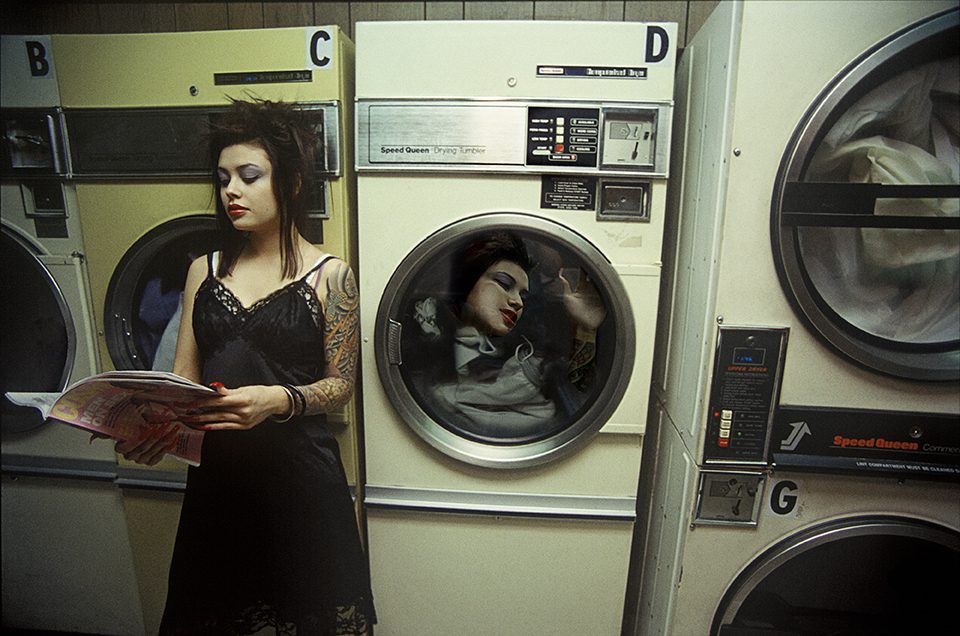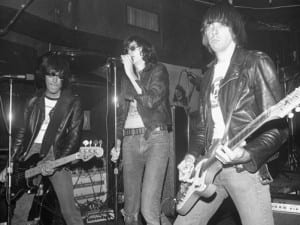Newcomer, Rebecca Handler, explores visual culture within the context of contemporary image-making.
At Aesthetica, we are constantly looking for new artists. In this interview, we chat with Rebecca Handler (b. 1981) a New York based photographer about her practice. Although Handler is a newcomer to the international photography scene, one thing is apparent, her vision creates impact. From her highly stylised Vintage series and sardonic portraiture, her work has a certain allure that captures the flux of emotions. Her methodology reflects contemporary image-making, by mixing photography and digital manipulation. Although, Handler has no qualms about digital manipulation, this poses questions around authenticity with some photographers still only using film; what does this signify within the wider photographic discourse?
How and when did you start taking pictures?
I have always been fascinated by art and when I was younger, I would escape into my own world through art. My parents bought my first camera when I was 15, which was a fully manual Minolta x-700. I took it everywhere and spent most of my high school years in the darkroom. Fortunately, I worked at the camera store in my town, so I could afford my new hobby and soon set up a darkroom in my parents’ basement.
Can you tell me about some of your series of works?
Vintage (2010) was based on beautiful, sensual and provocative photographs from the 1920s. In their day, these images were considered racy, but today they only allude to sexuality. For my shoot, I tried to capture the magnetism of these sultry and powerful women by embracing their femininity. In the Broken series (2009), I use the idea of being broken as a metaphor for the human condition. Lifeless bodies are beautifully framed within the image, and thus, become compositional elements of that environment.
What’s the narrative behind the Twins, the current Aesthetica cover?
As part of my Vintage series this image represents the notion of duality and the idea of double personalities, doppelgangers and alter egos. I was inspired by a number of photographs of twins and look-a-likes, most notably, photos by Diane Arbus and Mary Ellen Mark. I’m fascinated by the dichotomy of identical things, in this case people. How can something be simultaneously the same and different? For this shoot, I decided on a circus theme, which included two images. The first one was a glamorous circus performer who was shot in a house of mirrors. I used the mirrors to continue this theme of duality, while the other image depicts the less enchanting workers, shot outside of the Big Top tent. The backdrop was a loan from a friend who made it for a Bergdorf Goodman window display as part of a circus tent he constructed.
How do you plan each shoot? What happens before, what happens after?
My shoots are premeditated; a lot of visualisation and planning goes into each and every step. Before the shoot, I explain in detail the character that the sitter will be playing. I love people and can relate to almost anyone, so for my sitters, I use a variety of friends, acquaintances and professional models. I think there is a great benefit in getting everyone involved and excited about the process. I form a connection with my sitters by getting to know who they are, taking the time to find out what they like and what they dislike. This research helps to inform how their individual personalities will enhance the overall image.
How do you get a particular project started? What’s your process for organising this?
The process begins with a small idea that grabs my attention and imagination. When I start a project, I create a brief and often do a sketch, which is drawn from reference images that I source to provoke inspiration. Next I choose a location, lighting, styling, models, and then I’m ready to get started. After the shoot, I will make my selections from the images taken, and then the post-production work begins. I’ll examine the overall tone of the picture, and then undertake some digital manipulations to enhance the image, for example, mood and colour. At this point in the whole process of image-making, the picture comes to life and my vision is fully realised. My images are not just a moment in time or a snapshot, they are completely orchestrated, and I see the process more like making a painting.
You mix photography and digital manipulation, while some photographers still shoot with film, how has embracing technology changed your work?
I feel that technology allows artists to further explore the limits of their imagination; it is a tool that facilitates the true capturing of a vision. The means to create art are constantly evolving and if Photoshop will help me to attain my intended vision, I will take advantage of this technology. Why not use the tools available to help transcend limitations? As artistic processes develop, the only true restriction will become the artist’s imagination.
What photographers and artists influence you and why?
I am particularly influenced by old media art, advertising and fashion photography. Photographers who inspire me include: Gregory Crewdson for his lighting, elaborate sets, fog machines and the open-ended narratives that he creates in his images. I also love his bizarre images of American Suburbia (2003-2005) where he shows chaotic scenes, frozen in time. Another photographer is David Lachapelle for his usage of bright colours, extravagant and conceptual fashion photography and cultural references. The uninhibited nature and brilliant character leaves a lasting impact on the viewer. Finally, it has to be Richard Avedon because I admire the connection he had with his sitters, as well as his amazing ability to capture the moment through beauty and composition.
What do you feel is the role of the image in today’s society when they have become so disposable?
Although images may be disposable, their impact most certainly is not. As a society, we are visual creatures that are ultimately inspired and motivated by what we see in the world around us. This is obvious in how we present ourselves to the world and each other, for example, what we wear, what we drive, and even how we decorate our homes. In each portrayal we hope to intrigue, inspire and captivate our “audience.” As a culture, our lifestyle is a direct result of the visual manifestations created by artists. Think about the impact of advertising and the fashion industry.
Your work takes on a range of genres from highly stylised portraits to surreal creations, how do you feel this is engaging with reality?
I refuse to limit my art. I am free with my ideas and never question myself or my intentions. When there is something I want to photograph, I shoot it. Sometimes I only fully realise the subconscious meaning behind my images after they are finished. I don’t wish to engage with reality; I want to inspire imagination. There is a huge amount of thought and philosophy behind my projects, but I also allow myself to be uninhibited because that’s the only true way to tap into the subconscious. I often feel like I’m teetering somewhere on the boundary between reality and dreams, but I believe this is the place where art is created.
What are you working on now and what are your future plans?
Right now I am working on a series of images based on adverts from the 1960s, but of course I will add my own kitsch twist. For this series, there will be four images that will represent the seasons. I also have an idea for another project, which will be focused around broken marionettes, but really my future plans are just to continue shooting.
To view more of Rebecca Handler’s work, visit www.rebeccahandler.com.
Shirley Stevenson





